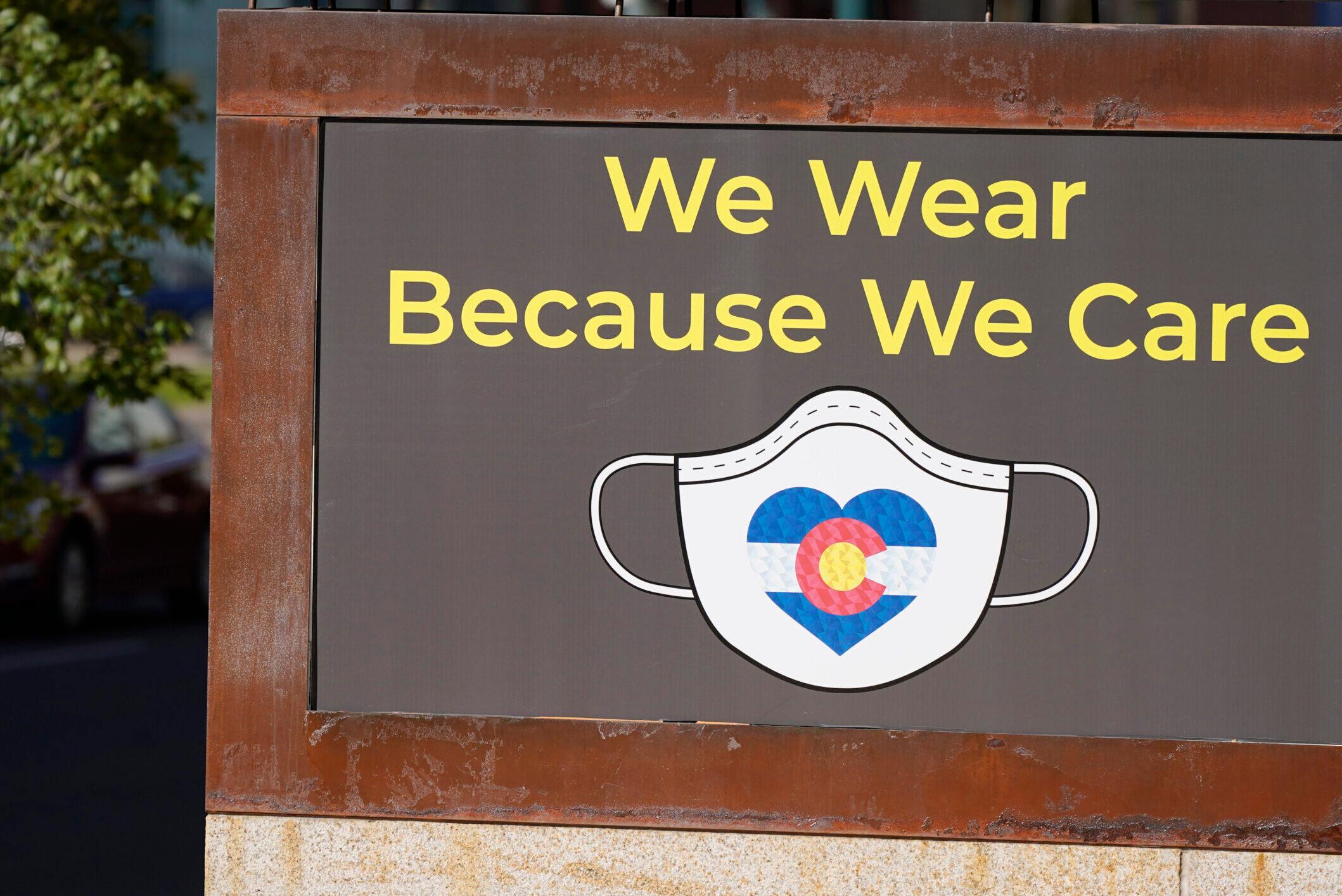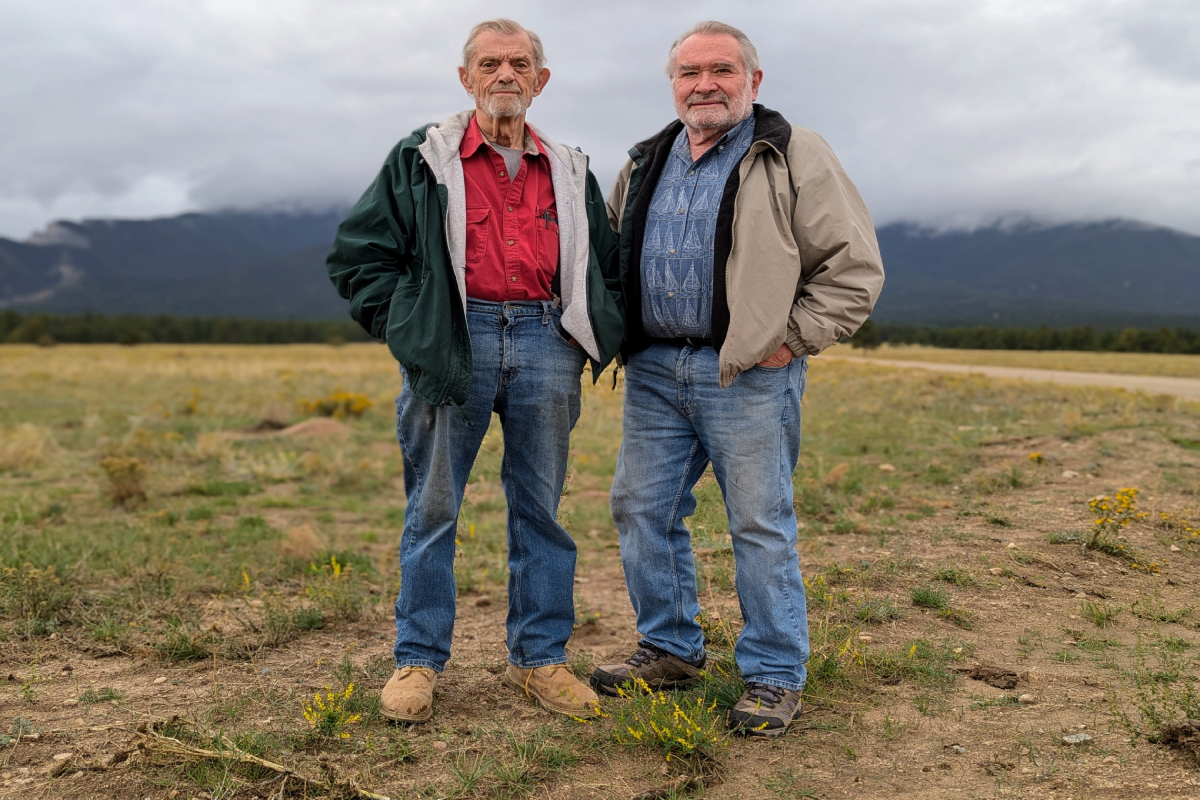
Unless Coloradans can change their behavior and slow the spread of COVID-19, the state could hit a record number of hospitalizations from the pandemic in two weeks, and could exceed ICU capacity by the start of 2021, or sooner.
Models from the state health department show if contacts increase over the holidays, ICU capacity could be exceeded in December.
Now, new restrictions could be coming, a top health official warned, if Coloradans are unable to reverse the trend.
“There is a small window to improve transmission control over the next few weeks,” said Dr. Jonathan Samet, dean of the Colorado School of Public Health. “To limit increasing infections and avoid peaks that could strain healthcare capacity over the next three months, a substantial increase in transmission control is needed.”
Public health experts say that means reducing contacts outside of the home, wearing a facial covering anytime in public, washing hands regularly and maintaining social distance from people outside of your household.
“We're seeing a climb (in COVID-19 numbers) that is deeper than we've seen in the first two waves. We're seeing the numbers go higher than we've seen in the first two waves,” said Dr. Mark Johnson, a former longtime Jefferson County health department director and president-elect with the Colorado Medical Society, a prominent doctors group.
- Coronavirus Is Roaring Back In Colorado With Record-High Cases
- Several Counties Move To Tighter Restrictions As Coronavirus Cases Rise
- Even As Cases Spike, The Question Of Kids In School Has Different Answers In Denver, Adams Counties
- Coronavirus Outbreaks Set New Record As A Third Wave Of Infections Keeps Growing
- Mesa County Had One Of The Most Open Economies In Colorado. Then The New Coronavirus Wave Hit
Johnson worries too many providers could get sick, then limiting hospitals ability to care for patients in their normal fashion, by “overwhelming the caregivers, so that we have so many nurses and respiratory therapists and physical therapists and physicians who are getting ill and who are being pulled out for isolation and quarantine.”
That, he said, would compromise not just care for COVID-19 patients, but those hospitalized for other things, like heart attacks, strokes or trauma.
Numbers released Friday afternoon show that 781 Coloradans are now hospitalized with confirmed or suspected cases of COVID-19, up from 742 on Thursday. Of those, 663 are confirmed cases, up from 622 on Thursday. The 663 is an increase of 44 percent from a week ago when 458 were hospitalized with confirmed cases.
The data released Friday also revealed that the state set a new record for cases recorded in a day on Thursday, with 2,171. That partly reflects the increase in the number of tests being conducted in the state, but a higher percentage of those tests are coming back positive too. Nearly 9 percent of tests were positive on Thursday, with a 3-day average positivity rate of 7.91 — up from 6.29 just a week ago.
A dozen Colorado counties have re-instituted stricter limits on business occupancy and gatherings in recent days in an effort to reduce the spread of the virus.
Unless the current trend reverses, Colorado is forecast to hit its highest number of hospitalizations due to COVID-19 by Nov. 10, according to the new model. The ICU capacity limits could be reached in early to mid-January, according to the health department.
But that threshold could be met even in December if social contact increase over the holidays. That could happen because of gatherings between multiple households. The state announced last week that gatherings should be limited to no more than 10 people from a maximum of two households.
One in 219 Coloradans are currently infectious, so the probability of encountering an infected person is higher than it was at any point this summer. That compares to 1 in 292 last week.
Transmission levels are key, and those too are trending in an unhelpful direction. The estimated level of transmission control is now 65 percent (for the period of Sept. 28 - Oct. 13). Public health officials say transmission control levels under about 79 percent will lead to increasing infections. If contact rates can be reduced and transmission control is above 79 percent, infections will drop.
The effective reproductive number is estimated at about 1.6; a number above one indicates the virus is spreading, while staying below that number means it’s declining.
The Colorado Department of Public Health and Environment (CDPHE) and the Colorado School of Public Health on Friday released the updated modeling report showing hospitalizations from SARS-CoV-2 keep going up rapidly statewide.
The latest projections are based on COVID-19 hospital census data through Oct. 26, 2020, and based on the current state of the science, according to the health department.








